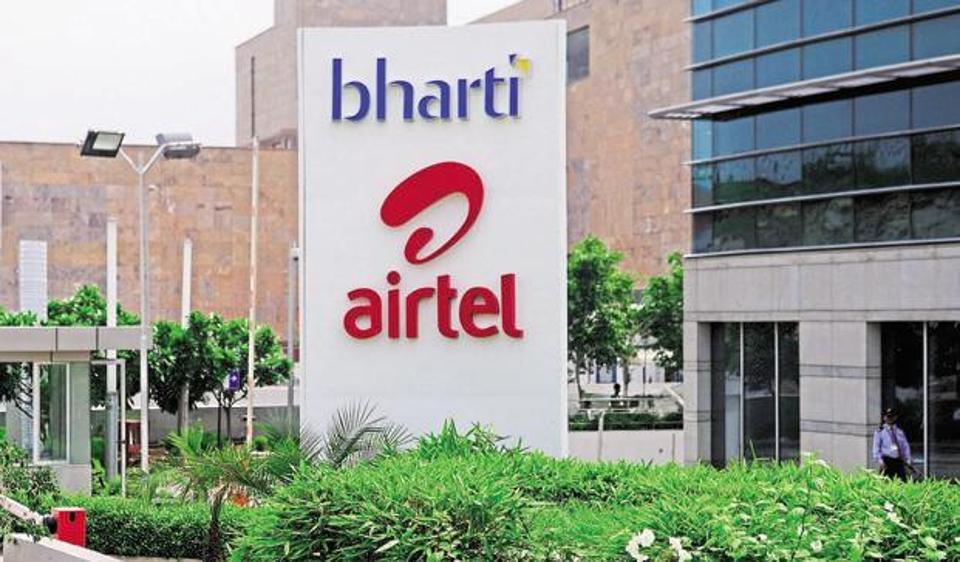Concerning Outlook: Bharti Airtel Q1 Net Profit Expected to Drop 20% QoQ; ARPU Projected to Rise 3%

Concerning Outlook: Bharti Airtel Q1 Net Profit Expected to Drop 20% QoQ; ARPU Projected to Rise 3%
As Bharti Airtel is set to announce its Q1 results for the quarter ended June 2023, there are expectations of strong performance compared to the same period last year. This positive outlook could be driven by factors such as increased subscriber base, data usage, and revenue from its core telecom operations.
However, on a sequential basis, Airtel’s earnings growth may be affected by foreign exchange losses. Exchange rate fluctuations can impact the company’s financials, especially if there are significant currency movements during the quarter.
It’s important to note that the telecom industry is highly competitive, and factors like regulatory changes, pricing pressures, and technology advancements can influence a company’s financial performance. Therefore, while there are expectations of a strong quarter for Bharti Airtel, investors and analysts would closely analyze the actual results and management commentary to understand the underlying trends and the company’s future outlook.
A 19.8% drop in net profit on a quarter-on-quarter basis would be a notable decline, and it might be driven by various factors, including foreign exchange losses as mentioned earlier.

On the positive side, a 1.70% increase in the company’s topline indicates modest revenue growth during the quarter. This growth could be due to higher subscriber additions, increased data usage, and improvements in average revenue per user (ARPU) in the telecom segment.
It’s worth noting that the telecom industry in India is highly competitive, and companies like Bharti Airtel face challenges such as aggressive pricing and capital expenditure for network expansion and upgrades.
As the results are announced and the management provides further insights during the earnings call, analysts and investors will closely monitor the factors that have impacted the company’s financials and listen for guidance on the company’s strategies and outlook for the coming quarters.
A 2.9% quarter-on-quarter growth in Average Revenue Per User (ARPU) to ₹199 indicates a positive trend for Bharti Airtel. The factors contributing to this growth, as mentioned, are:
1. Premiumisation: Users upgrading from 2G to 4G plans typically result in higher ARPU due to increased data usage and higher tariffs for 4G services.
2. Strong Addition in Postpaid: Postpaid subscribers generally have higher ARPU compared to prepaid users, which can boost overall ARPU.
3. Additional Day: This could refer to a change in the billing cycle, resulting in an extra day’s revenue for the quarter.
4. Price Hike in Minimum Recharge Plan: A price hike in minimum recharge plans can lead to increased ARPU, as it encourages users to spend more on their recharge.
These factors collectively suggest that Bharti Airtel is making efforts to improve its revenue metrics and capitalize on opportunities for growth in the highly competitive telecom market.

As the company announces its Q1 results and provides insights during the earnings call, investors will be keen on understanding how these factors have impacted ARPU and overall financial performance, as well as the management’s outlook and strategies for sustaining growth in the future.
The projected muted subscriber addition of 2-3 million can be attributed to the impact of the pan-India rollout of higher minimum recharge plans. Higher minimum recharge plans might have discouraged some low-value or inactive subscribers from continuing with their services, leading to a slower growth in the subscriber base during the quarter.
On the operational front, a 2.15% quarter-on-quarter increase in Earnings Before Interest, Taxes, Depreciation, and Amortization (EBITDA) to ₹19,100 crore indicates the company’s efforts to manage costs and improve operational efficiency. However, it is noted that the EBITDA margin is expected to remain flat at 51.9%, possibly due to various factors like competitive pricing pressure or incremental network investments.
Overall, despite the anticipated muted subscriber addition, Bharti Airtel’s expected growth in EBITDA reflects the company’s focus on optimizing its operations and maintaining profitability in a challenging market environment. As always, the actual results and the management’s commentary during the earnings call will provide a comprehensive view of the company’s performance and future outlook.

The potential hindrance to Airtel Africa’s performance due to Nigerian currency devaluation is a significant factor to consider. A currency devaluation in Nigeria could impact the company’s dollar revenue and EBITDA, leading to a 4% quarter-on-quarter decline in dollar revenue to $1,287 million and a 5.1% quarter-on-quarter dip in EBITDA to $622 million. Currency fluctuations can pose challenges for companies operating in multiple countries, as they affect the conversion of local currency earnings into the reporting currency, which in this case is the dollar.
On the other hand, Airtel Africa’s underlying growth is expected to be healthy, indicating that the company’s core operations and customer base may be performing well despite the currency-related challenges in Nigeria.
In the home service segment, steady revenue growth of 4.2% quarter-on-quarter and a margin growth of 60 basis points (bps) quarter-on-quarter is anticipated. This suggests that the home service business is expected to continue its positive trajectory and show improvement in profitability.
However, the DTH business may be muted, possibly due to factors such as increasing competition in the DTH market or changes in consumer preferences for content consumption. The exact reasons for the expected muted growth in the DTH business were not mentioned in the information provided.

Bharti Airtel’s focus on enterprise offerings presents an exciting opportunity for the company to tap into a market estimated to be around ₹50,000 crore. The enterprise offerings, including Communication Platform as a Service (CPaaS), cloud services, cybersecurity, and data centers, are targeted at corporates looking to adopt 5G technology within the next three years. This move aligns with the growing demand for advanced digital services and solutions in the business sector, and it could be a significant growth driver for Bharti Airtel in the coming years.
As the company prepares to announce its Q1 results, the share price was trading slightly lower at ₹872.60 apiece on the BSE at 10:00 am. The market might be cautiously awaiting the financial performance for the quarter, especially considering the potential impact of foreign exchange losses on earnings. However, investors and analysts are also likely to be interested in the company’s outlook and strategies, including its plans for capitalizing on the enterprise market opportunity.
The next few hours leading up to the earnings announcement will be crucial, and the actual results and management’s commentary during the earnings call will determine how the market responds to Bharti Airtel’s Q1 performance and future prospects.




